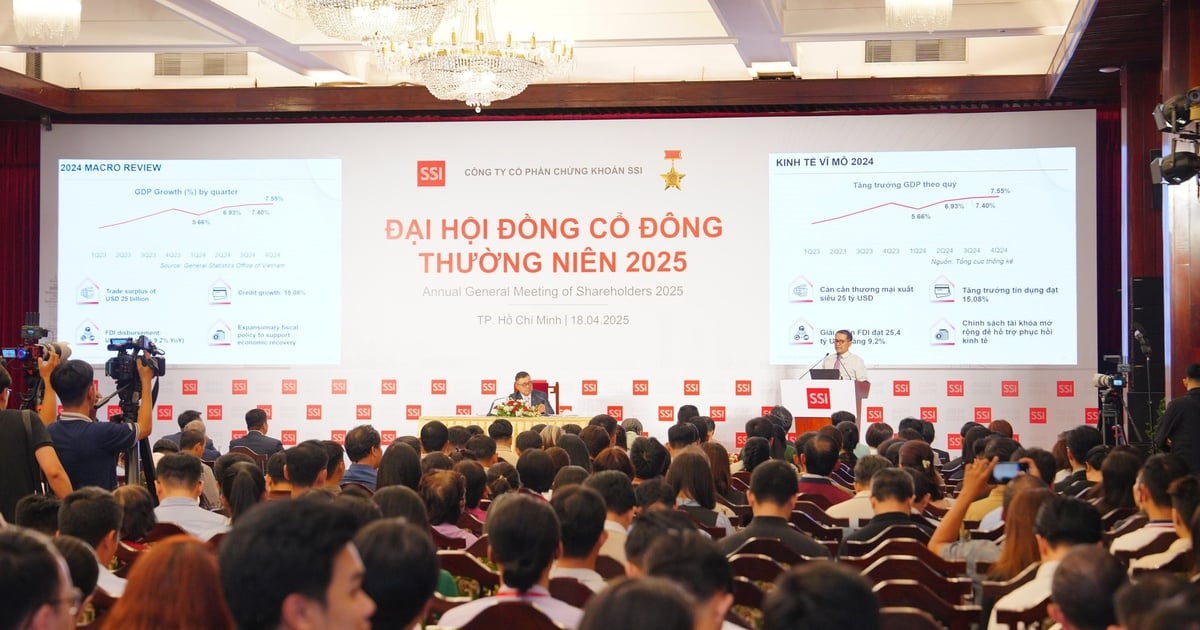SGGP
The launch of a separate corporate bond exchange is expected to help make the market more transparent, thereby stimulating demand recovery in the coming time. However, after two weeks of operation, trading on the separate corporate bond exchange has been quite gloomy.
"Goods" are few
In the first week, the total trading value through the floor was about 2,000 billion VND and in the second week it was nearly 500 billion VND. Of which, the main transactions were bank bond transactions with about 1,262 billion VND issued by Vietcombank and more than 480 billion VND issued by BIDV. Up to now, the trading floor has only 25 corporate bond codes registered for trading by 4 issuing organizations including Vietcombank, BIDV, Tradico and Vinfast. Of which, Vietcombank participated in 15 codes and BIDV in 5 codes.
Explaining this lull, Mr. Nguyen Duy Thinh, Chairman of the Hanoi Stock Exchange (HNX), said that because the "goods" were still modest in the early stages, when the "goods" were put on centralized and complete trading, liquidity would gradually increase. Decree 65/2022 of the Government on the offering and trading of corporate bonds, issuing organizations will have to put their bonds on the centralized trading floor within 3 months from the official operation of the system. After the floor is put into operation, individual corporate bond trading outside is considered illegal. Thus, it takes time for businesses to carry out procedures to put corporate bonds on the centralized trading floor.
Mr. Thinh also said that HNX is currently coordinating with propaganda agencies to soon put about 1,000 individual corporate bond codes of 500 issuing enterprises with outstanding debt of about 1 million billion VND on the floor for trading. After the corporate bond codes are put into centralized trading, liquidity will improve and the market will gradually recover. "The first stage is mainly institutional investors, because at this time the market liquidity has just begun to recover, then it will spread to individual investors. When confidence returns, the issuance market has many positive signals, which will lead to a vibrant secondary market in the second half of the year," Mr. Thinh predicted.
Mr. Nguyen Quang Thuan, Chairman of FiinGroup - a company providing financial data analysis and credit rating services in Vietnam - said that investors are still waiting, but the regulation that non-professional individual investors can only sell but not buy, while the demand for corporate bonds in the market is still low, is also the reason why liquidity has not been active.
Will stimulate demand
The research team of SSI Securities Company believes that the launch of a separate corporate bond exchange is a good start. In order to maintain its inherent benefits to the market, this exchange must maintain liquidity with many bond codes traded. According to SSI's estimates, in the next 3 months, a total of VND733,000 billion of corporate bonds from about 455 issuers will have to register for listing on HNX according to regulations. Ms. Thai Thi Viet Trinh, senior analyst at SSI, said that the main goal of the separate corporate bond exchange is to provide liquidity to investors, helping to recover demand for corporate bonds, first of all from institutional investors with abundant capital and the need to diversify their investment portfolios.
The nature of corporate bonds is long-term investment, individual corporate bond investors are mainly financial institutions, they buy to hold until maturity as a channel with stable cash flow, so we cannot expect the bond market to have vibrant liquidity like stocks. Even if 1,000 corporate bond codes are put on trading, the transaction value may be high, but the transaction volume will be low and cannot be as vibrant as the stock market.
Mr. NGUYEN QUANG THUAN, Chairman of FiinGroup
Mr. Nguyen Quang Thuan also commented that the private corporate bond trading floor is a big step forward for the corporate bond market and gradually contributes to restoring investor confidence, especially for individual investors. Centralized declaration activities with requirements for declaring information about the issuer and the bond lot will contribute to information transparency for the market and serve as a basis for investors in making decisions and taking responsibility for their investments. Thereby, it also creates a mechanism to form a corporate bond interest rate curve instead of leveling. When an investor accepts and expects a higher interest rate, they must also accept a higher risk of late payment or capital loss. Centralized trading also helps investors screen and classify bonds.
However, experts also said that to restore confidence in the corporate bond market, more solutions are still needed. In the short term, the Government will continue to study more solutions to solve existing problems such as rating corporate bonds based on solvency assessed by the Ministry of Finance. Quickly issuing a list of corporate bond ratings based on solvency will be a reasonable approach to classify issuers according to risk and from there have different support methods.
Source





![[Photo] Prime Minister Pham Minh Chinh receives Mr. Jefferey Perlman, CEO of Warburg Pincus Group (USA)](https://vstatic.vietnam.vn/vietnam/resource/IMAGE/2025/4/18/c37781eeb50342f09d8fe6841db2426c)





























































































Comment (0)